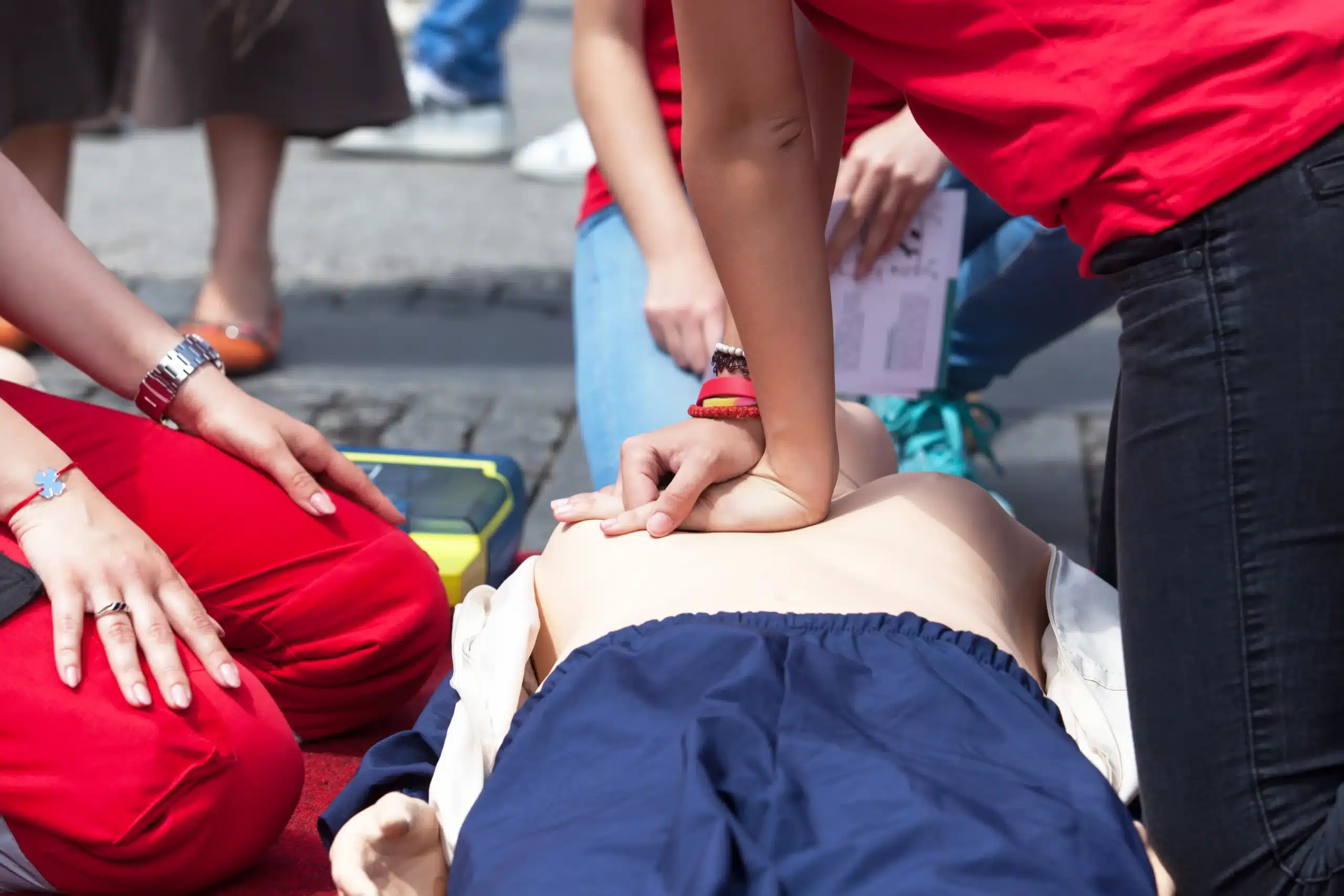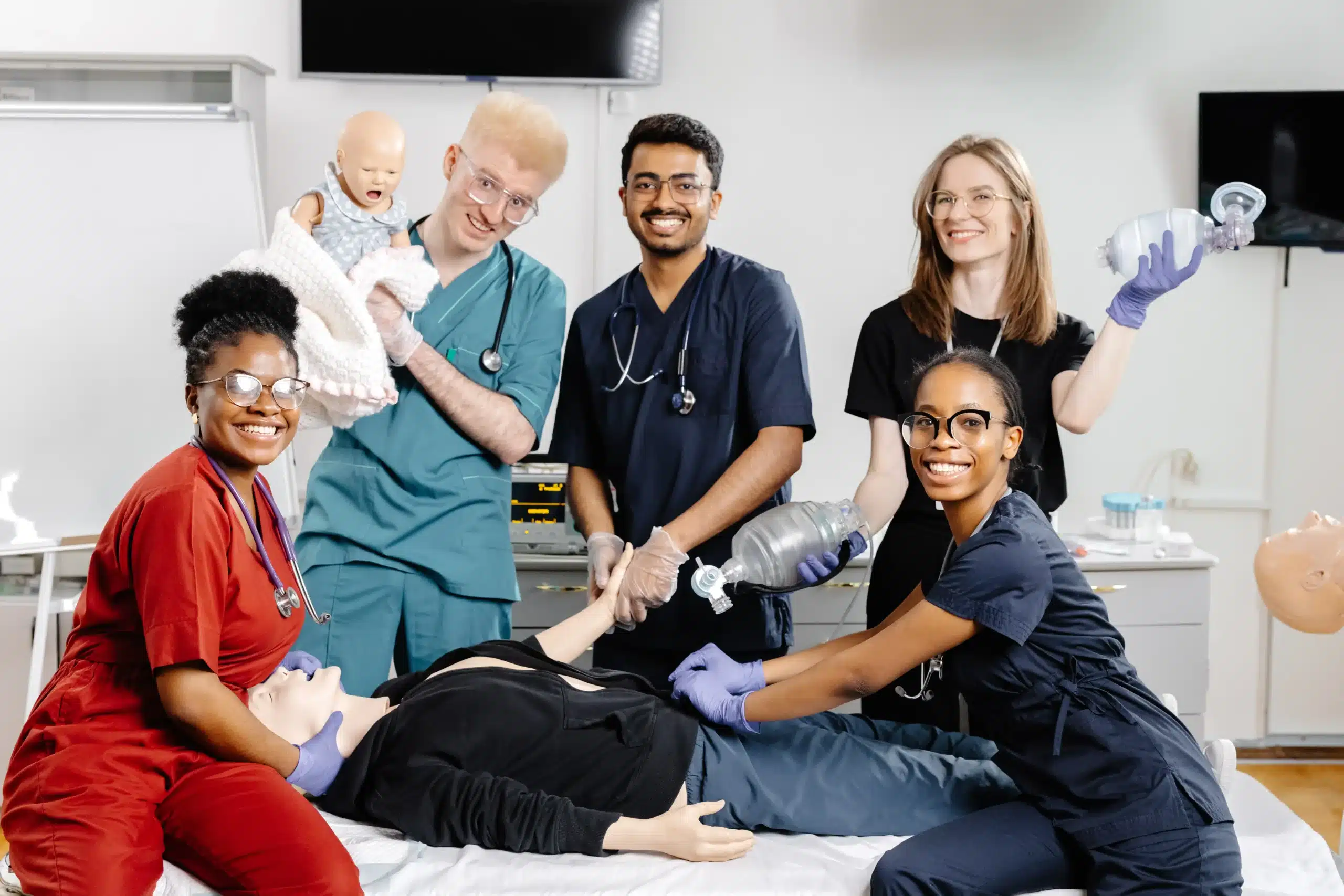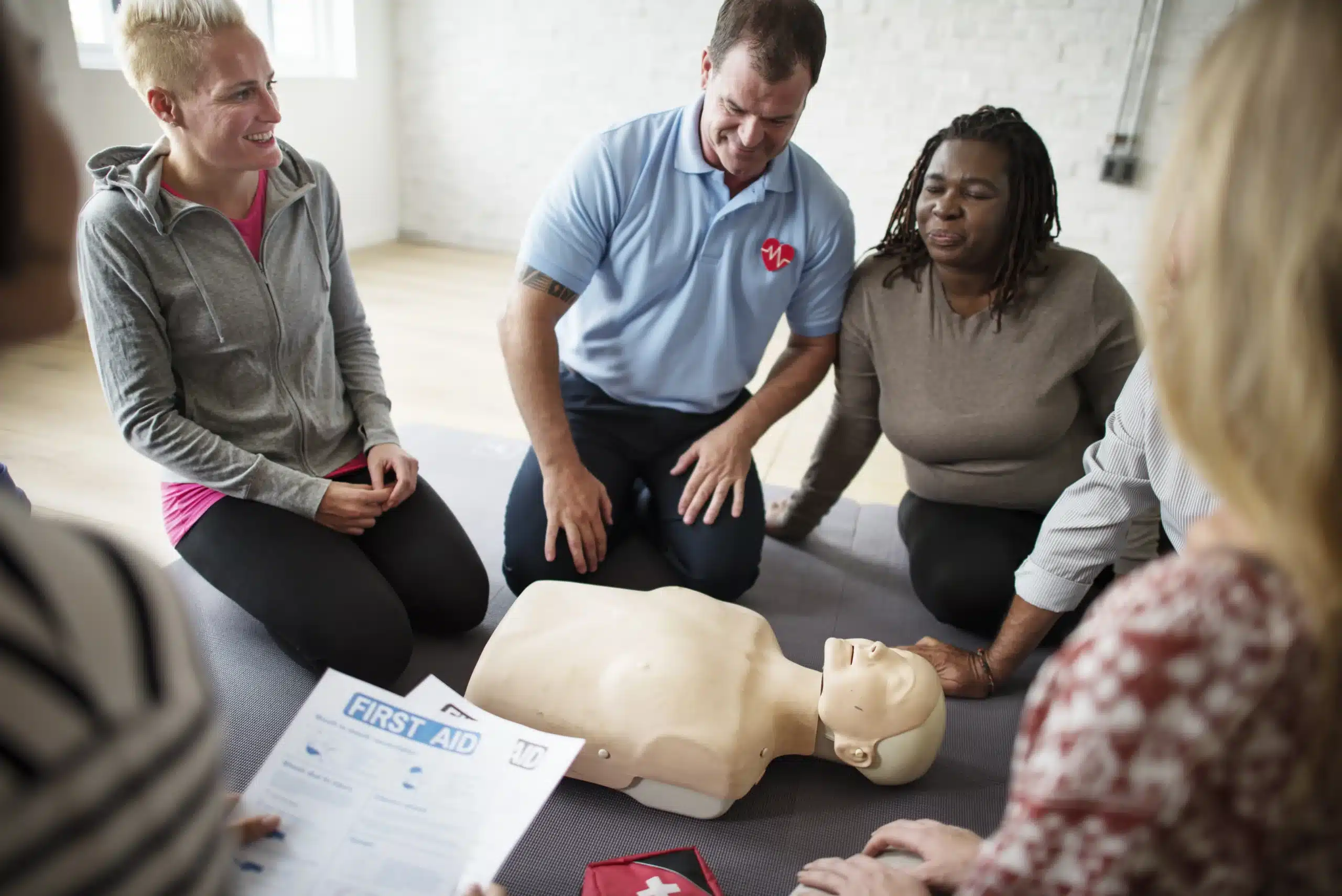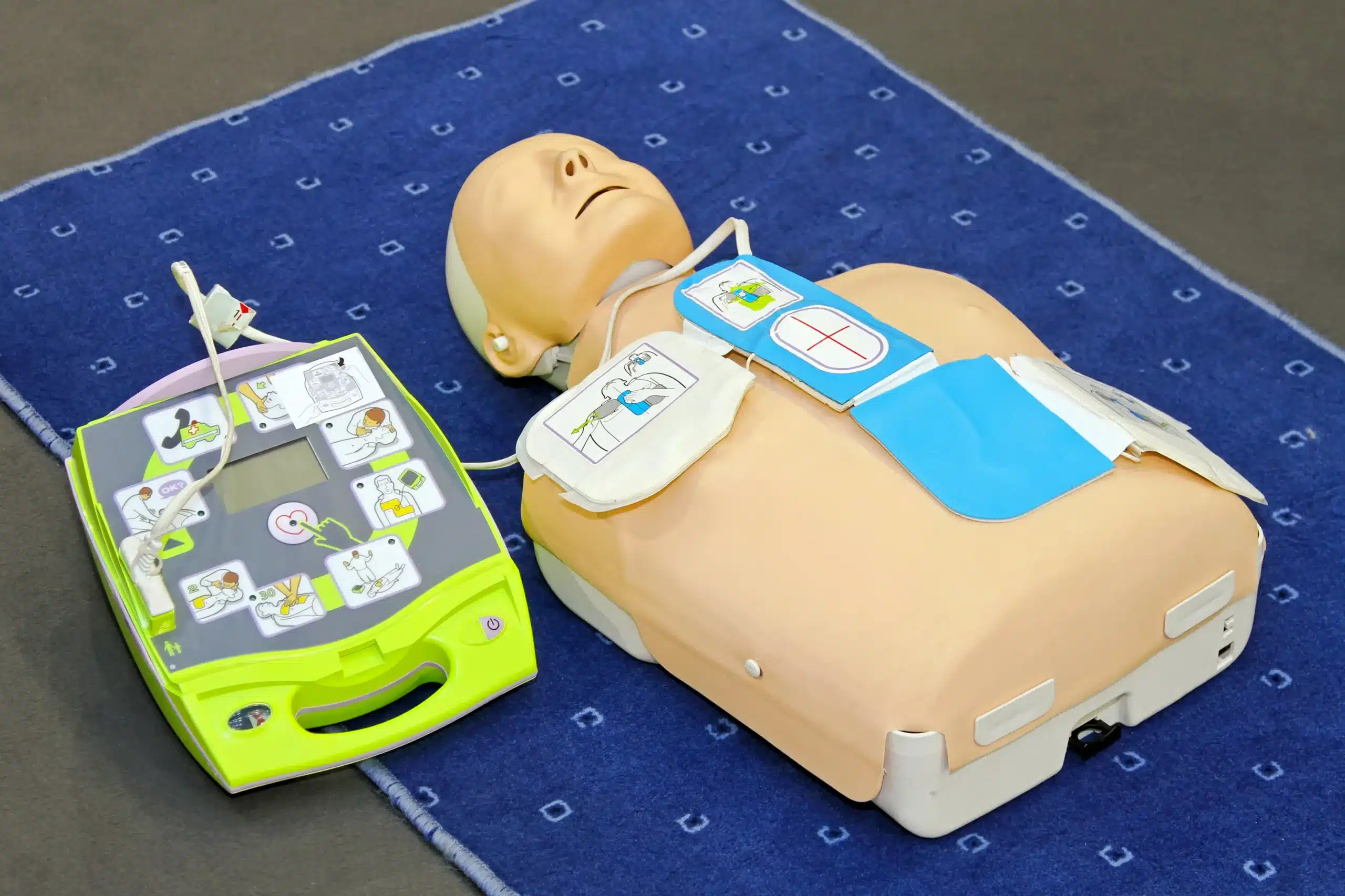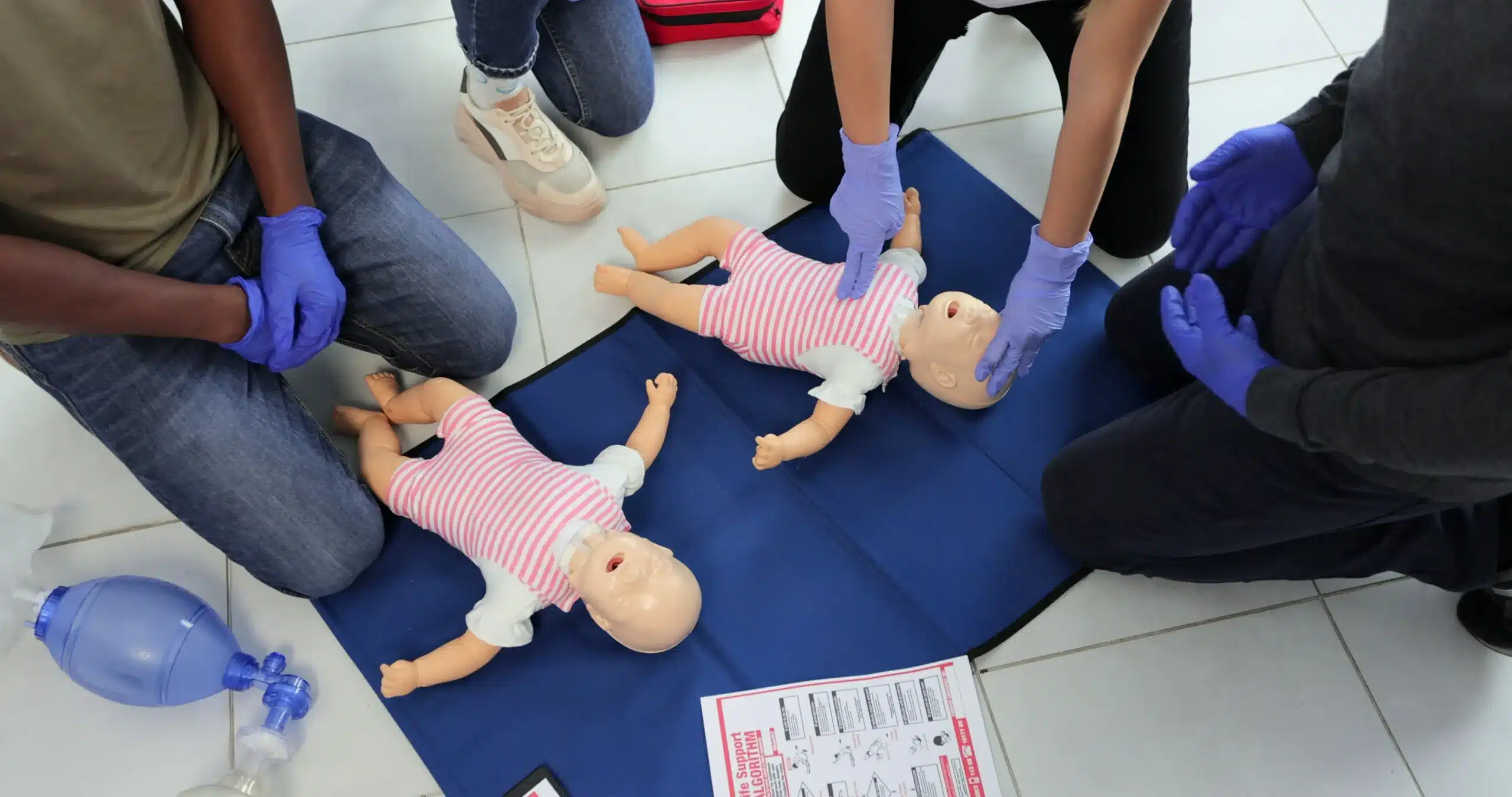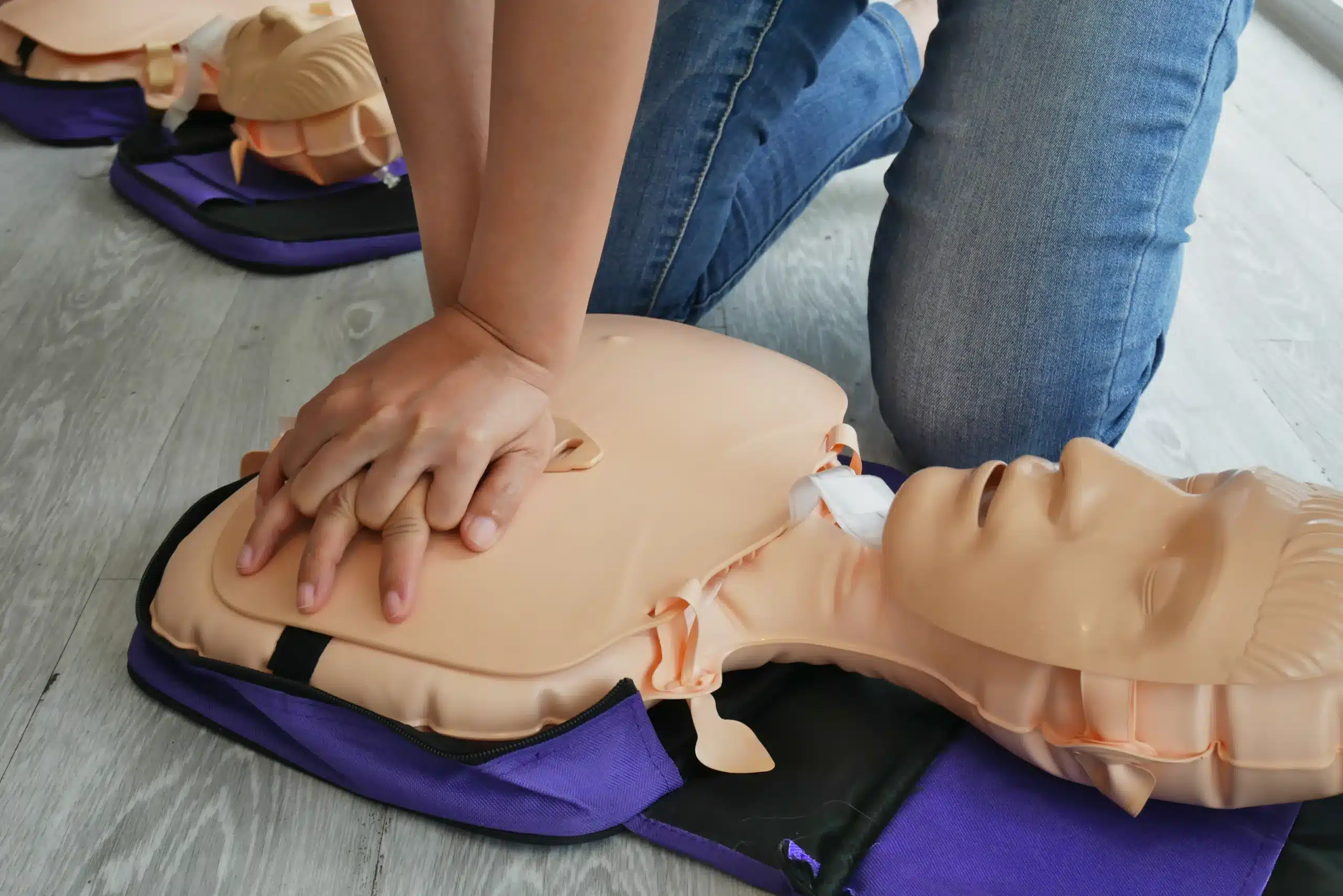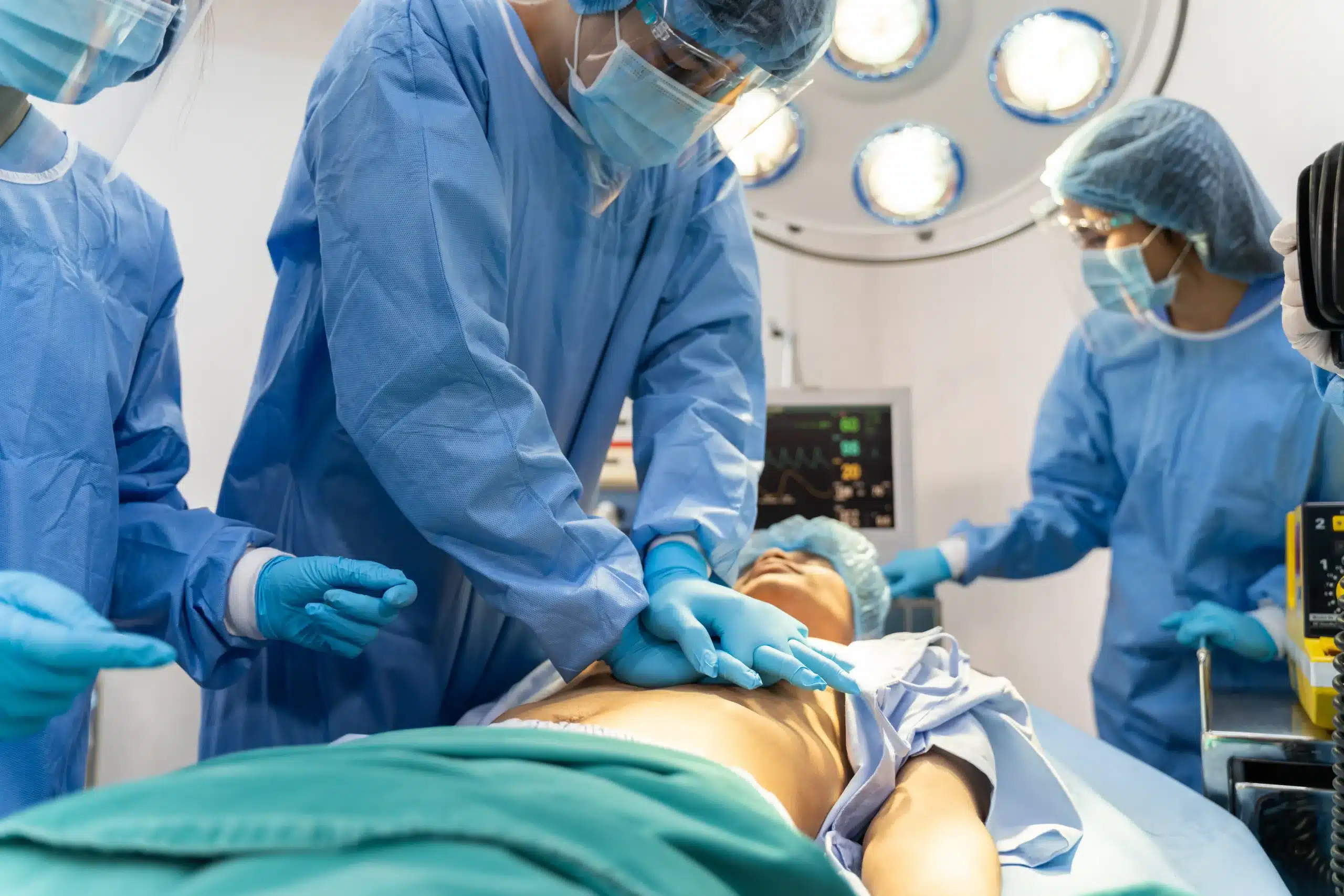Emergencies can happen anytime, anywhere. Would you know what to do? BLS certification empowers you to take action and potentially save a life. Whether you’re a healthcare professional, a concerned parent, or simply someone who wants to be prepared, understanding BLS is invaluable. This comprehensive guide covers everything from the basics of BLS to finding “BLS classes near me.” We’ll explore different learning formats, discuss costs and providers, and offer practical tips for preparing for your BLS class. Let’s equip you with the confidence and skills to make a difference in a crisis.
Key Takeaways
- BLS certification empowers you to act in emergencies: Learn essential skills like CPR, AED use, and airway management to confidently respond to medical crises. Explore various course formats to find what suits your needs.
- Select a BLS provider carefully: Prioritize AHA-approved courses led by experienced instructors. Hands-on practice and a comfortable learning environment are key to a valuable experience.
- Stay prepared by keeping your BLS skills current: Regular practice and staying informed about the latest guidelines ensure you’re always ready to help. Refresher courses and simulated scenarios are great ways to maintain your skills.
What is BLS?
Basic Life Support (BLS) is the immediate level of medical care provided to someone experiencing a life-threatening illness or injury. It’s a critical bridge between the onset of an emergency and the arrival of paramedics or emergency room personnel. BLS can be performed by anyone with the right training—medical professionals, first responders, and even bystanders. These crucial first steps can significantly increase a person’s chance of survival.
Definition and Importance
BLS focuses on maintaining vital bodily functions, especially breathing and circulation. This often involves techniques like CPR (cardiopulmonary resuscitation) to restart the heart and rescue breathing to get oxygen flowing to the lungs and brain. BLS certification shows you’ve received formal training and have the skills to perform these life-saving procedures. While essential for healthcare providers, BLS skills are valuable for anyone who wants to be prepared for an emergency. Knowing what to do in a crisis can make all the difference.
Skills You’ll Learn in BLS Training
BLS certification training gives you the essential skills to respond effectively in a crisis. You’ll learn to recognize the signs of life-threatening emergencies, like a heart attack or stopped breathing. The training covers how to use an automated external defibrillator (AED), a portable device that can analyze heart rhythms and deliver a shock to restore a normal heartbeat. You’ll also learn how to open someone’s airway and perform rescue breathing. Additionally, BLS training teaches you how to help someone who is choking. These skills empower you to provide immediate care in those critical moments before professional help arrives.
Find BLS Classes Near You
Finding the right BLS class is easier than you think. Whether you prefer online convenience or hands-on, in-person instruction, several options exist for finding BLS training near you.
Search Online
Start with a quick Google search for “BLS classes near me.” This will generate a list of potential training providers in your area. You can also check the websites of nationally recognized organizations like the American Red Cross, which offers various BLS courses. Many providers offer online, in-person, and blended learning formats, giving you the flexibility to choose what fits your schedule. Online directories specifically for CPR and first aid training can also narrow your search.
Check Local Healthcare Institutions
Hospitals, clinics, and other healthcare institutions frequently host BLS certification courses. Contact your local hospitals or check their websites for upcoming class schedules. These courses are often tailored to healthcare providers and taught by experienced medical professionals. For example, the American Red Cross in Georgia offers BLS courses developed and reviewed by medical experts, ensuring the training is relevant and current. This is a great option for those seeking training from professionals in the field.
Explore Community Centers and Libraries
Community centers, recreation departments, and even libraries sometimes offer BLS training. Check their websites or contact them directly about upcoming classes. When choosing a class, ensure it’s approved by a recognized organization like the American Heart Association. Prioritizing in-person classes, especially those with hands-on practice, can be particularly helpful for developing these important skills. A-B-CPR offers helpful tips on selecting the best BLS certification class for your needs.
Types of BLS Class Formats
Choosing the right BLS class format depends on your learning style, schedule, and budget. Let’s look at the most common options: in-person, online, and blended learning.
In-Person Classes
In-person BLS classes offer a structured learning environment with face-to-face interaction. You’ll work directly with a certified instructor and fellow students, practicing skills and asking questions in real-time. This hands-on approach allows for immediate feedback and personalized guidance. The American Red Cross highlights that in-person training, along with blended learning, meets OSHA workplace requirements and professional licensing standards—essential for many healthcare professionals. This format is ideal for those who thrive in a traditional classroom setting and value direct interaction.
Online BLS Courses
Online BLS courses provide flexibility and convenience, allowing you to learn at your own pace and from anywhere with an internet connection. Many online courses use a combination of videos, interactive exercises, and downloadable resources. However, it’s important to note that the American Heart Association (AHA) requires an in-person skills assessment to receive your BLS certification, even for online courses. This means you’ll need to schedule a separate session to demonstrate your skills to a certified instructor. Also, be aware that online-only options may not meet all workplace or licensing requirements, so check with your employer or licensing board. The American Red Cross offers more information on these requirements.
Blended Learning
Blended learning combines online learning with hands-on training. You’ll typically complete the cognitive portion of the course online, learning the theory and concepts at your own pace. Then, you’ll attend a shorter in-person session to practice your skills and complete the required skills assessment. The American Red Cross notes this blended format offers flexibility while still ensuring competency. It’s a great option for those balancing a busy schedule with the benefits of hands-on instruction.
Choose the Right BLS Class Provider
Finding the right BLS class provider is crucial for a valuable learning experience. Here’s what to consider:
Accreditation and Certification
First, confirm the course is AHA-approved. The American Heart Association (AHA) sets the standard for BLS certification, and many employers require this specific credential. Make sure your chosen provider offers an AHA-aligned curriculum to meet workplace requirements.
Instructor Qualifications
Experienced, certified instructors make all the difference. Look for a provider that employs instructors with real-world experience, not just theoretical knowledge. Their practical insights can significantly enhance your learning.
Class Size and Equipment
A smaller class size allows for more personalized attention from the instructor. Hands-on practice is also essential. Choose a provider that offers in-person classes with access to equipment like AEDs and mannequins, giving you the chance to apply your skills in a simulated environment. Safety Training Seminars, for example, emphasizes hands-on training in their courses.
Recommended BLS Class Providers
Several reputable organizations offer BLS certification. Here are a few options:
Safety Training Seminars
Safety Training Seminars provides BLS certification courses designed for both healthcare professionals and the general public. They offer a low-price guarantee and classes across Northern California, making them a convenient option for many. You can explore their BLS course schedule to find a class that fits your needs.
American Red Cross
The American Red Cross offers various BLS training formats, including online, in-person, and blended learning options. This flexibility allows you to choose the format that best suits your learning style and schedule.
American Heart Association
The AHA itself often offers courses directly or through affiliated training centers. You can typically find a list of certified training centers on the AHA website. This ensures you’re receiving training that adheres to their rigorous standards.
National Safety Council
The National Safety Council also provides BLS certification courses among its broader safety training programs. They emphasize practical skills and knowledge application, preparing you to respond effectively in real-life emergencies.
Cost of BLS Classes
Knowing the price range for BLS classes helps you budget and find the best value. Let’s break down the costs, influencing factors, and potential savings.
Average Price Range
BLS certification classes typically cost around $75, though this can vary. For example, CPR Certification Brooklyn lists its AHA-certified BLS course at this price point, which gives you a general idea of the market rate. Remember that prices may differ depending on your location and the specific provider.
Factors Affecting Cost
Several factors influence the final price. A training provider’s reputation, location, and included materials or certifications all play a role. Safety Training Seminars offers various AHA certifications, including BLS, ACLS, and PALS, at their San Francisco location. While cost is a factor, remember that BLS certification is an investment in life-saving skills. It’s crucial to weigh the cost against the potential benefits.
Discounts and Promotions
Look for discounts or promotions that can make BLS training more affordable. Organizations like the American Red Cross often have promotional discounts on training materials. Safety Training Seminars also has a low price guarantee, so check their site for potential savings on BLS, ACLS, and PALS courses. Comparing prices and exploring available deals before choosing a class is always wise.
Get BLS Certified
Now that you understand the importance of BLS certification, let’s discuss how to get certified. This section covers everything from course length and exam requirements to how long your certification remains valid.
Course Duration
BLS courses typically combine classroom learning with hands-on practice. This blended learning style helps you grasp both the theory and practical skills needed to perform BLS effectively. While specifics may vary slightly by provider, most BLS courses.
Exam Requirements
You’ll need to demonstrate your skills through a written exam and a practical skills test to earn your BLS certification. The written exam tests your knowledge of BLS principles and procedures, while the practical skills test evaluates your ability to perform those procedures correctly. The American Heart Association (AHA) offers detailed information on their BLS course requirements, including exam specifics. Remember, the AHA requires an in-person skills assessment—there’s no entirely online option for AHA-certified BLS courses.
Certification Validity and Renewal
BLS certifications are generally valid for two years. You’ll need to recertify after this period to maintain your credentials and stay current with the latest guidelines. Recertification usually involves a shorter refresher course covering any updates to BLS procedures. The Red Cross provides helpful information on BLS and CPR certification, including details on renewal. Keep in mind that you’ll likely need a current or recently expired certification to qualify for recertification.
Prepare for Your BLS Class
Getting ready for your BLS class doesn’t have to be stressful. With a little preparation, you can walk into class feeling confident and ready to learn. Here’s what you should know:
Prerequisites
There aren’t strict prerequisites for BLS training. A common misconception is that it’s only for healthcare professionals. Anyone can take a BLS course—from medical students and healthcare providers to teachers, coaches, and concerned parents. BLS certification equips you with life-saving skills usable in various situations. You’ll learn to use automated external defibrillators (AEDs), basic airway management, and techniques for assisting someone who is choking. These skills are valuable whether you’re a healthcare worker or simply want to be prepared for emergencies. Check out our BLS course to learn more.
Study Materials
Your BLS class will likely include a student manual. Review this material beforehand to familiarize yourself with the core concepts. Many providers, including Safety Training Seminars, offer additional resources like practice tests and videos. Take advantage of these tools to reinforce your learning and identify any areas where you might need extra focus. Debunking common myths about BLS certification can also help you approach the class with the right mindset. It doesn’t require a huge time commitment, and online options offer flexibility for busy schedules.
What to Bring
Keep it simple. Bring your student manual, a pen and notepad for taking notes, and a comfortable outfit. You’ll be practicing hands-on skills, so comfortable clothing is essential. A water bottle is also a good idea, especially for longer classes. Your BLS provider will supply any specialized equipment, like AED trainers and mannequins.
Common BLS Misconceptions
It’s easy to get confused about BLS certification, especially if you’re new to healthcare training. Let’s clear up a few common misconceptions.
BLS vs. CPR
One common area of confusion is the difference between BLS and CPR. CPR (cardiopulmonary resuscitation) focuses on chest compressions and rescue breaths for someone who has stopped breathing or has no pulse. BLS (Basic Life Support) has a broader scope. BLS certification covers CPR techniques, but also includes training on using an automated external defibrillator (AED), basic airway management, and how to help someone who is choking. Think of BLS as a more comprehensive approach to emergency care.
Who Benefits from BLS Training
Another misconception is that only doctors and nurses need BLS training. Anyone can benefit from these lifesaving skills. From healthcare providers and medical students to teachers, parents, and other community members, BLS training equips individuals to respond effectively in medical emergencies. Consider getting BLS certified if you’re around children, work in a high-risk environment, or simply want to be prepared to help in a crisis. You can find BLS classes near you in a variety of formats to fit your needs.
Online vs. In-Person Training Effectiveness
Finally, there’s sometimes a question about the effectiveness of online BLS certification compared to in-person training. While in-person classes offer hands-on practice, many reputable organizations now offer credible online BLS courses that include a hands-on skills assessment component. Online learning can be a convenient and flexible way to get certified, especially for those with busy schedules. Just make sure the course you choose includes a hands-on skills check to ensure you’re fully prepared.
Maintain Your BLS Skills
Once you’re BLS certified, regular practice is key to maintaining your skills and confidence in real-life emergencies. It’s not just about having the certification—it’s about being truly prepared to act quickly and effectively when it matters most.
Refresher Courses
BLS certification is typically valid for two years. As your certification nears its expiration date, consider enrolling in a refresher course. These courses reinforce core skills and introduce any updated guidelines or protocols, ensuring your skills are current and your certification remains active.
Practice Techniques
The best way to stay sharp is through regular practice. BLS programs often use a scenario-based approach. Create your own practice scenarios with a friend or colleague to simulate different emergency situations. This hands-on practice improves critical thinking, problem-solving skills, and builds muscle memory for essential procedures.
Stay Updated with Guidelines
Medical guidelines and best practices are constantly evolving. Stay informed about the latest BLS recommendations by subscribing to relevant medical journals, attending workshops, or following reputable organizations like the American Heart Association or the Red Cross. This ensures you’re using the most effective techniques in any emergency.
Related Articles
- BLS Certification in San Francisco: Your Complete Guide – San Francisco CPR Classes
- Find the Best BLS Classes in San Francisco – San Francisco CPR Classes
- BLS Courses in SF: Your Guide to Getting Certified – San Francisco CPR Classes
- BLS for Healthcare Providers in San Francisco – San Francisco CPR Classes
- BLS Recertification Near Me: A Practical Guide – San Francisco CPR Classes
Frequently Asked Questions
Is BLS certification difficult to obtain? BLS certification focuses on practical skills and doesn’t require advanced medical knowledge. The courses are designed to be accessible to anyone, regardless of their background, and many find the training straightforward and easy to follow.
What if my BLS certification expires? If your BLS certification expires, you’ll need to take a recertification course. This is typically shorter than the initial certification course and covers essential skills and any updated guidelines. It’s important to renew your certification promptly to maintain your credentials and stay current with the latest life-saving techniques.
How do I choose between online and in-person BLS classes? Consider your learning style and schedule. Online classes offer flexibility, while in-person classes provide direct interaction with an instructor and hands-on practice. Both formats typically include a skills assessment component, so choose the one that best fits your needs and learning preferences.
Why is BLS important for non-healthcare professionals? BLS skills can be invaluable in any emergency. Knowing how to perform CPR, use an AED, and assist someone who is choking can make a critical difference before professional help arrives, even if you’re not a medical professional. These skills empower you to act confidently in a crisis.
How can I find a reputable BLS training provider near me? Start by searching online for “BLS classes near me.” Check local hospitals, community centers, and the websites of organizations like the American Red Cross and the American Heart Association. Look for providers offering AHA-approved courses with certified instructors and hands-on training components. Reading reviews and comparing prices can also help you make an informed decision.


